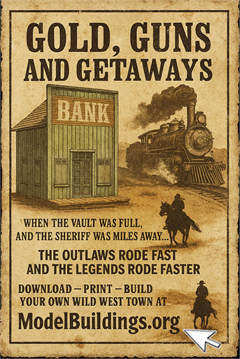Everything on model trains, model railroads, model railways, locomotives, model train layouts, scenery, wiring, DCC and more. Enjoy the world's best hobby... model railroading!
Restoring Old Marklin Loco’s to Working Order
Ed asks readers:
“I have 15 or more old HO Marklin locomotives in a box in the closet. They are there because I ‘m still starting to build my layout. What do I need to do to get them running? They are stored in their original.boxes.”
5 Responses to Restoring Old Marklin Loco’s to Working Order
Leave a Reply















well, for one, how old are they? 30, 40 years old? That’s important. Also, you’ll probably want to send them to an expert. Do that. I have 2 40-year-old marklins and they worked great after i sent them to an expert to be restored.
miles,
Care to give some more information like the expert?
I’m in the same situation with a Marklin (passenger c. 1945) my uncle brought back at the end of WW II. For various reasons, it’s remained in storage over the years. Now I would like to get it up and running at last.
My oldest Marklin is 42 years old. I got it in 1974. When I was stationed in Germany in 1997-2003, I went into a Marklin dealer and asked if he could change my analog engine into a digital engine. He asked if I had 50 Euros and I said yes. He said he could. I purchased two additional Marklin sets, both of which are digital. There is so much more you can do with a digital locos, so I suggest you might look into getting them converted. Just wanted to pass along this info so you know what is available if you want it.
If you are dealing with the old series wound analogue Marklin locos and you are handy with small tools, you do not need to send the units away. I have stripped and rebuilt many old Marlin locos and even done some digital conversions. The Marklin motors are rugged and because they do not have permanent magnets, disassembling them does no damage. You will need a small screwdriver and a pair of tweezers. The main issue is to clean out all the old grease and oil from the motor bearings, intermediate gears and trucks. I have found that lighter fuel is particularly good for this purpose. First remove the armature and all the electrics without disconnecting the wiring – if a wire breaks or comes loose, don’t panic. Just note where it went and solder it back when you are finished. Photographs are very useful in this regard. Do not submerge the whole mechanism in any kind of cleaning fluid – you will probably ruin the paint. What I have done on occasion is to over-oil the mechanism and use the oil to penetrate and loosen the old gunk. I then clean off the excess oil and gunk and re-oil the gears and bearings. When re-assembling, be careful not to get the motor brushes mixed up. Happy tinkering!
I agree with Neil. There is no reason that you can’t bring them up to speed on your own. A clean and lube and under Standard DC it should run well. If that is the case converting to DCC is a matter of a Digital chip and isolating the motor from the frame. It is the same as any other HO train engine. Learn to do it yourself. from Newman